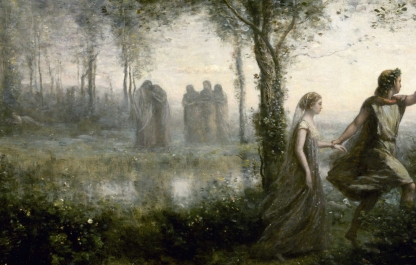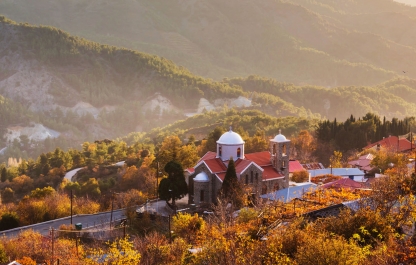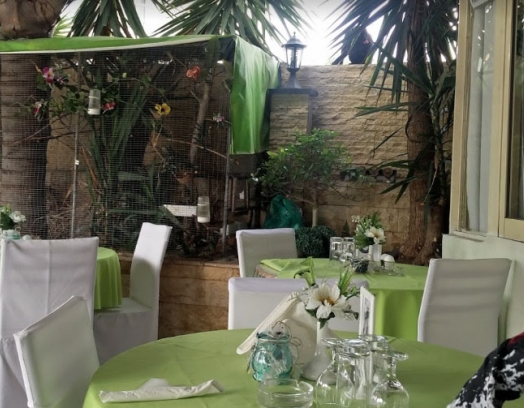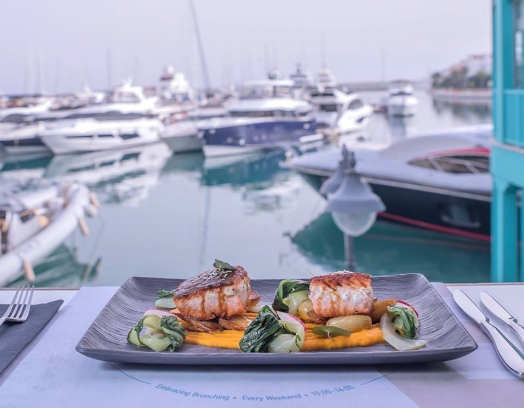Weaving natural plant materials is one of the earliest forms of skills developed by man, which at some time became a demanding craft, commonly practised across the world. It is considered to have originated long before the appearance of wood and metal work.
Various types of early dwellings, antique lodges, chairs, rugs, mats, ropes and fences, vessels, footwear and clothing — these were, in fact, the first woven items which man had at its disposal.
Amongst them were baskets, which could be used in an incredibly broad and diverse range of areas [1].
This folk craft has been continuously practised on the island for many centuries, without any particular changes and this is all thanks to the work of countless generations.
The island’s natural resources, their wealth, diversity and consequently, cheapness, are all factors which have allowed Cypriots to freely engage in folk crafts, including basket weaving, both independently and on a large scale. After all, bulrush and common reed grow in abundance across the whole island (on floodplains, the banks of seasonal rivers and lowlands), in addition to vines (wild and cultivated grapes grow along hillsides) and various tree species (turpentine, willow, wild olive, styrax etc.), whose flexible branches are another craft material used by skilled female workers.
The collective effort of weaving baskets and straw mats has gradually become a form of social activity: women and children get together in the depths of courtyards or a shady garden; while not forgetting to discuss their affairs and the local news during work, they often sing and relax together in their breaks.
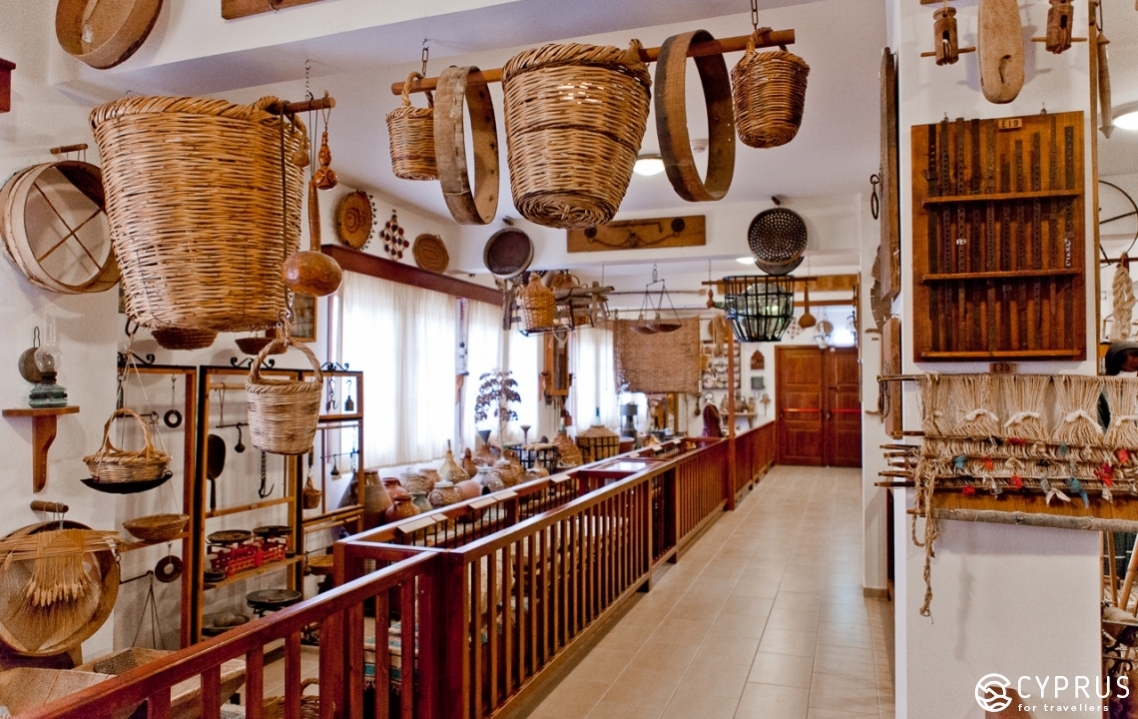
Such items were suitable for a wide variety of practical purposes, ranging from storing and transporting agricultural products, to encasing bottles — this was to ensure that wines didn’t leak and change their taste properties under the impact of sunlight [2].
Until 1985, according to official data, village communities such as Astromeritis, Pano Lakatamia (a part of modern Nicosia), Akrotiri and Kaminaria, were engrossed in the art of weaving.
Nowadays, basket manufacture and the weaving of other items from natural fibres and raw materials, is a professional craft in Livadia, with only several female weavers left in Liopetri and some other communities on the island.
Interestingly, researchers suggest that residents of Livadia tapped into the art of basket weaving during the 19th century.
Basketweaving began here as a men’s profession in particular but soon became exclusive to women, since men preferred being employed as workers or becoming masters in other crafts. This joint source of income enabled families to live securely.
Incidentally, Livadia’s current town council actively promotes this traditional craft, striving to protect and develop it further.
-
To this day, traditional-style baskets are still manufactured in the village Ineia (a region of Paphos), in Akrotiri (Limassol) and in the villages of Ksilotimpou and Avgorou, located in the Famagousta district. They are also produced in both Nicosia’s Centre of Crafts and other workshops opened with aid from the state.
Raw Materials and Baskets Types
Of all the raw materials used in Cyprus, the common reed is the easiest to procure and the simplest material to work with: all you need to do is soak it enough to make it more pliable! Besides this, it comes in various lengths.
Thin, bendy tree branches, or shrubs, are sometimes more suitable for specific weaves, as they can be combined with harder common reed and added to baskets or other weaved items.
In some villages, large baskets and bottle casings are woven using only branches. These baskets mainly carry grapes, as glass vessels are needed to store olive oil, wine and zivania.
They come in all shapes and sizes: nowadays, flat, coloured, woven trays are the most popular form of folklore decoration for the walls of homes. “Talaria” — a type of soft basket — are commonly used in Cyprus today to remove whey (straining) and to further press cheeses.

The island’s flat plain territories commonly used reed-woven baskets: the need for “packaging” to collect harvests and transfer various fruits and vegetables, led to the creation of practical, inexpensive items, which could be used constantly in the household. For instance, interwoven strips and bulrush leaves, as well as reed stems or date leaves, are all materials which have long been used to manufacture soft baskets for commercial transport or everyday purposes.
The diversity of wicker basket shapes was, of course, conditional to the purpose of their use: if usual foods were stored in wide baskets or on flatwoven trays, while oats were winnowed and fruits were dried on mats, then narrow baskets were used for carrying quarry-mined limestone and storing soft cheeses. Baskets with open tops were used for transporting birds to market etc.
Aside from this, villages in Messaoria would often smear clay on the inside and outside of large baskets (for storing flour) then sprinkle them with lime, in order to give the appearance of a clay pot. Reed panels were also fashioned, which were soon attached to wooden beams for constructing roof coverings. “Skarkes” — nets renowned for fish-catching — were woven from the pliant branches of olive trees.
Traditional straw stands and trays (“paneria” or “tsesti” — geometrically woven multicoloured baskets, expertly decorated with coloured reed or multi-coloured fabric strips — were one of the main types of interior wall decoration in Messaoria’s rural houses; other types, which have simpler weaves and are smaller in size, will always find some application in a household environment.
-
To manufacture baskets, female weavers require only a few simple instruments. Nowadays, in Akrotiri, weavers work at home: women weave various types of items, with the most popular being small, coloured baskets and elegant “talarias”, both of which are in demand here.
Bear in mind: items woven from vines and bulrush are cheaper in Akrotiri than in other areas… However, if you live in a different region, local petrol (at times rather expensive) is equal in cost to the things you can find near your house, in souvenir and craft shops.
You can find out more about basket weaving, as well as where and from whom in Akrotiri you can buy items, by visiting the local educational or information Centre.
Address: Queen Elizabeth street, Akrotriri
Contacts: +357 25826562, +357 99371359
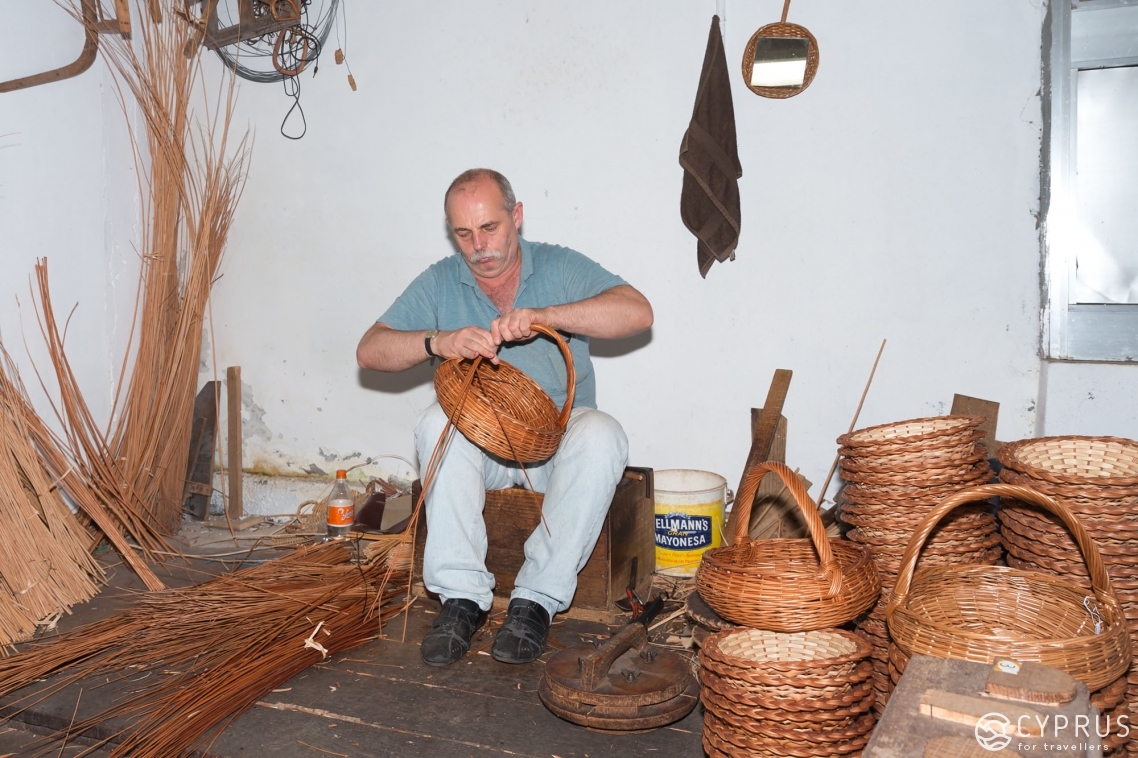
Grass and Straw Weaving
Bulrush and its variations — sharp-pointed rush, Erianthus and others — are another type of raw material, aside from common reed, which is still used to this day. Items made from it are especially effective for transporting delicate products.
Large baskets, known as “farti”, were mainly used for carrying light goods, while “zembilia”, a variation of them, were used to transport olives and olive-based products. Double (saddle) baskets (sirizes), which transported salt extracted from lakes, were loaded onto the backs of donkeys. Workers would carry their simple lunch (bread, olives and cheese) in “korokolios” — small, lidded baskets. Palm leaves and straw ropes (braids) were also used in Cyprus to manufacture a variety of woven items. So, for instance, bread was stored in small, laced rope baskets, which were hung in the kitchen from a hook attached to the ceiling.
“Tsesti” could always be found in houses and were intended for sun drying local grocery foods, such as: noodles “fides” and “tarhana” (wheat groats soaked in curdled goat’s milk — the foundation of a filling soup); and all types of bread, including Easter “flaounes” (open, cheese-filled pastries). Their main purpose was to serve as a storage space for koulouri bread, a multifunctional dish: it was used for entertaining guests at Easter and invitations to weddings, as well as decorating the house during demonstrations of a bride’s dowry to wedding guests (Read here for information about the place and role of bread in Cypriot culture).

Straw mat weaving is a skill which has changed little over time and is still practised today. Various types of basket can be fashioned, such as the large “kofina” or other weaved baskets, which are used for collecting and carrying linen and agricultural produce, in addition to aiding fishermen in securing their catch.
Besides this, the Cypriot population manufactured so-called “kalamotes” and “psatarkes” which are identical to roughly woven straw mats.
They were used as a finishing touch to interiors, for heat insulation and the roofing of traditional houses; they were also useful in shading terraces and cordoning gardens or allotments.
Kaputi Reed Mats
These mats were woven by women native to the now occupied village of Kaputi, located 7 km to the north-east of Morphou, with a population recorded in 1974 as numbering close to a thousand residents. The River Alupos runs northwards from the village, while the Ovgos lies to the South, therefore the marketable reed species “floudi” grows around natural bodies of water formed by these two rivers.
The mats require specialist knowledge of the plant’s properties (“floudi”, for example, is a type of bulrush), as well as experience and skills in manufacturing looms and various local artefacts.
The art of mat weaving (now sometimes referred to as phyto-weaving) has been passed down from generation to generation, as well as the special loom.
Production of mats and rugs began very early in the morning. The whole family would take part in the job: while the men left in search of the appropriate bulrush (they would cut, tie and then bring it home to be dried), the women would weave mats from readily-prepared raw materials, as children assisted and learnt the skills themselves.
First, the loom needed to be assembled and tuned. They then began to create the base for the future product. After placing their legs under the loom. Female weavers used to work while sitting on the floor, a rug or pillow.
-
Interestingly, natives to Kaputi haven’t forgotten this ancestral folk art and continue to preserve its secrets, creating beautiful, durable items in modern world conditions. Reed mats have various applications, but traditionally could be used as floor rugs, bedding or simple bed mattresses. You could also dry lentils on them or use them for other purposes: small mats could act as trays or mats for sun-drying various types of food products (for instance, in the process of drying out wheat for tarhana soup; as well as for olives and various grains etc) [3].
They were also used as ceiling mats which were inserted between roof beaming and tiles in order to keep heat inside residential housing and other buildings.
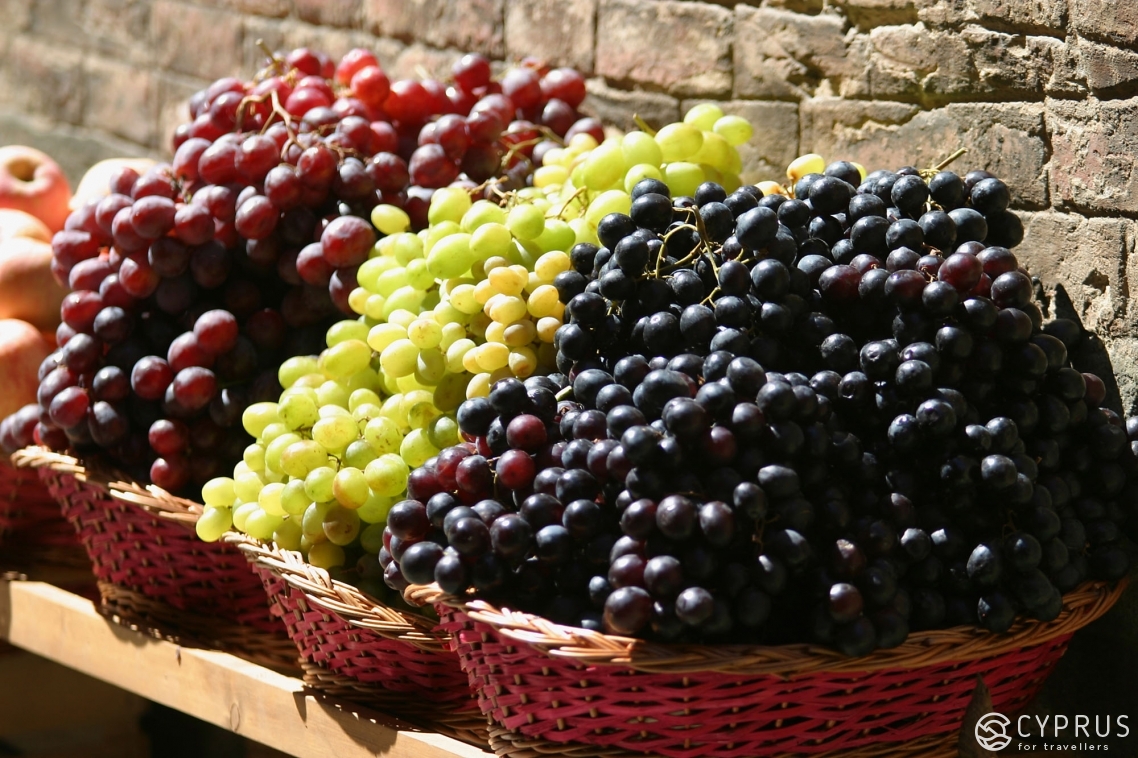
How it’s done:
Bulrush and vines, which you can prepare yourself if you wish, are cheap and available materials even beyond the island. All kinds of decorative folklore-style items can be made with them, as well as objects for everyday use: baskets, bread plates and trays, sweet vases, hats, panels and so on. Incidentally, as the wise and experienced say: preparing bulrush conceals particular difficulties: you need to prepare the material correctly so that it doesn’t crumble into pieces or cut your hands. Also, if you’re intending to make large objects, you ought to choose reed mace instead.
You’ll be able to find out more from watching videos or attending lessons.
Weaving a mat
You’ll need twine, some bulrush (or Timothy grass when it’s growing), some pegs (12) and three planks. By the way, the basics of weaving, which you’ll master when making mats, will be very useful if you’re further inspired to make something else, let’s say, a tapestry.
First, we prepare the raw materials: you’ll need to cut the grass (bulrush) and dry it out in the shade.
Two planks are needed to create the base; the third you will use to beat down the rush and make it as flat as possible.
Hammer the pegs into the ground at an equal distance and fasten a loop of twine to each of them. Now cross the threads and tie them to the planks: remember that the “even” ends should be fastened to one plank and the “odd” ones to the other. And so, your loom and your base are ready.
Generally, it’s better to start weaving small items, for their external appearance depends on the flatness of the weave… it will get better (and look better!) later. Shall we begin?
So, lift the plank with the even-numbered threads and remove it from the pegs. Place a small bundle of the rush on the odd-numbered threads: beat the rush down flat onto the pegs using the third rod. Lower the plank with the even-numbered threads while lifting the odd-numbered one upwards. Repeat the whole process: place the rush, beat it down, lift the “odd” plank, lower the “even” plank (in fact, it’d be better if you painted both planks at the start with different colours — that way you won’t get mixed up).
When your mat has reached the desired length, you’ll need to link the threads together in pairs — odd threads with even ones. Now you simply cut the twine from the pegs and link the ends in the same way.
Voila, your mat is done. Sometimes it might require drying out a little, but — don’t forget — only in the shade!
Blinds
The material used (bulrush) and the method of making them follow the same principle: however, you don’t have to flatten the weave. In this case, roll the base threads into balls, instead of attaching them to the pegs: after flipping each pair of threads, tie them together in a double knot.
An important detail: to ensure that the item doesn’t come out lopsided, make sure you fasten all the knots with the same tightness (you’ll get the hang of this in time); so it’s better to start making blinds once your hand is already a little “beaten in”, so to speak.
Once the blinds are ready, you can draw on them or use a stencil.
And now for a little weaving using vines (grapevines) or bendy branches (any kind).
A Christmas Wreath
You’ll need: a freshly cut grapevine (roughly no more than 10 two-metre length branches, but the number depends on how thick you wish the future wreath to be); a glue gun; decorative elements (cones, spruce or pine twigs, acorns, dried flowers, blades of grass or dried forest berries); decorative materials (sacks, Christmas balls, lace ribbon and beads etc).
So, prepping the vine: if it isn’t very fresh, it’s worth soaking it to make it more elastic.
Turn one vine into a ring and tie it: with your left hand, press the ring down to its desired diameter and use your right to wind the remaining part of the branch around the obtained base of your future object.
Use the remaining branches to cover your ring, while not forgetting to tie the ends of the vine when you start weaving.
Continue to braid the vine around the ring until the wreath has reached its required thickness; when weaving, all the branches must be coiled in the same direction.
Now for decorating: use the glue gun to your heart’s content to attach the decorative elements.
Bulrush Mats
A summer activity for true men: useful, convenient and ecological, for all situations in life. The ingredients for success: a large tabletop, soft knitting yarn, bulrush (with a larger content of stems than leaves in the bundle), pliers and an axe.
Lay the rush out into two parts on the tabletop: turn the first half over and mix it with the second so that the leaves and stems are equally distributed across the tabletop. Then use your palm to grab a small number of rushes and bond (twist) them together with the woollen thread; repeat this with the other bundles, gradually advancing further. Do the same with the other end of your mat. After every 5 bundles, you need to beat them down flat, then the rows of thread need to be joined together.
As a finishing touch, for extra effect, trim the edges of the mat with the axe to make it “easier on the eye” and more convenient for future use.
After coming up with a lesson for you, we’ve realised that our aim has been fulfilled for today, so we’ll end here.

[1] In practically any urban or rural folk history museum, you can find samples not only of vine weaving but instances of materials such as bulrush, vine and straw being used in construction and everyday life. For example, the exhibits at the museum in Steni.
[2] We all know that the short-term impact of sunlight doesn’t have a very strong effect on wine, but the liquid requires a dark place to be stored: if it has lengthy interaction with bright light and heat, the wine will age quickly and go off.
[3] Finally, Muslims, including Turkish-Cypriots, used them traditionally at funeral ceremonies (the deceased was wrapped in them).
Until Next Time!




